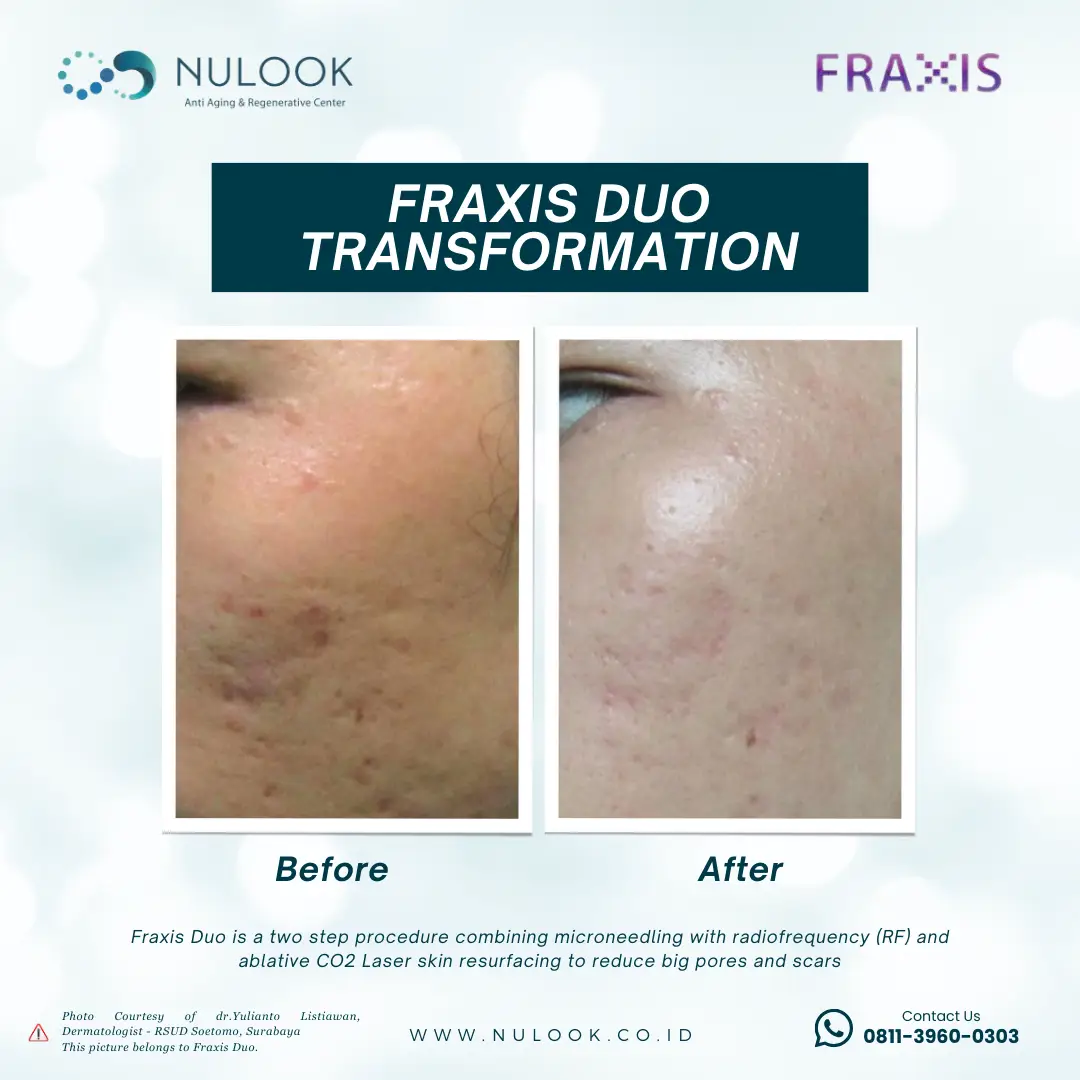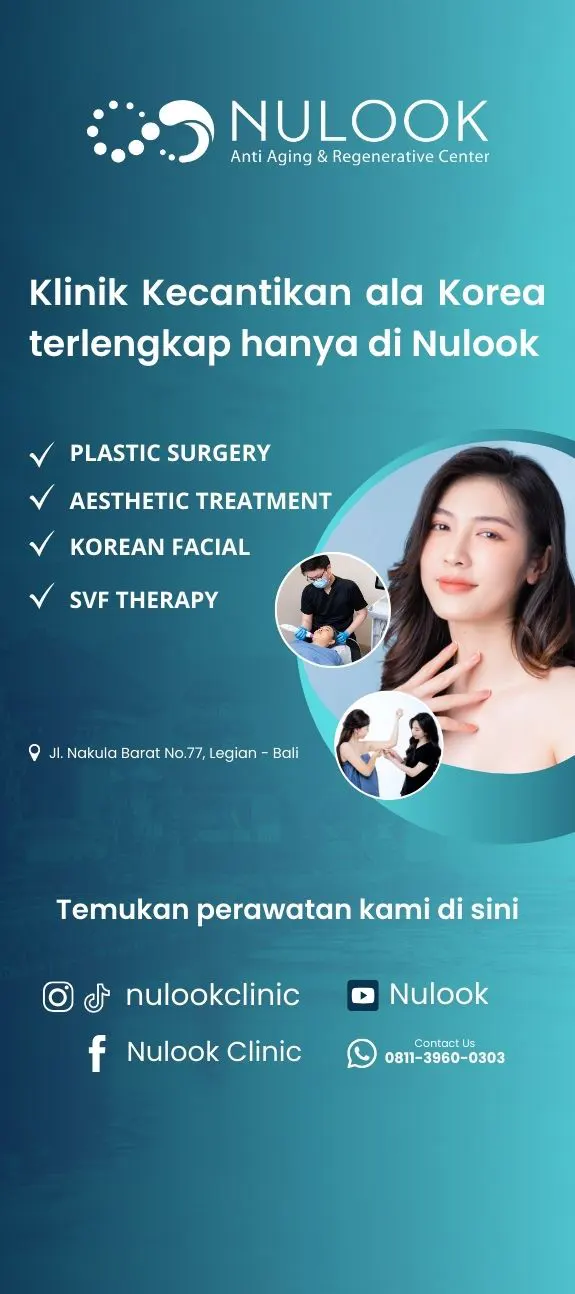Types of Acne and How to Overcome Them: Powerful Tips for Acne-Free Skin
Author: Nulook ExpertiseReview by: -Acne is often a frustrating problem for many people. The appearance of various types of acne can disrupt someone's appearance and confidence. From small pimples that feel like drizzle to large pimples that feel like mountains, each type has a fairly disturbing impact. So, what are the various types of acne and how to overcome them?
Acne can appear in various parts of the face, chest, back, and even in other parts of the body. However, although often annoying, there are several ways you can do to overcome them. In this article, beauties will explore various types of acne that commonly appear on the skin and also effective strategies to overcome them. So, let's explore together how to deal with these acne so that your skin remains clean and healthy!
3 Types of Acne
Acne is a common skin problem experienced by many people of various ages. There are several types of acne that often appear and can affect someone's appearance and confidence. See below:
1. Mild Acne
Whiteheads and blackheads are two types of mild acne that are often found on the skin. Both are the result of clogged pores by oil, dead skin cells, and dirt.
a. Whiteheads
Whiteheads occur when pores are blocked by sebum (skin oil) and dead skin cells, but the pores are still covered by a layer of skin above them. Whiteheads look like small white or reddish bumps on the skin. They tend to be smaller and do not cause inflammation like pustules or nodules.
b. Blackheads
Blackheads are also caused by clogged pores by oil and dead skin cells, but the pores are open so that air can oxidize the trapped oil, producing a black or brown color. This is what gives the name "blackheads". They also tend to be flatter than whiteheads.
Both types of comedones are often considered mild acne because they usually do not cause significant inflammation. However, if left untreated, comedones can develop into papules or pustules, which are more inflamed.
Read Also: Facial Skin Hyperpigmentation: Causes and How to Overcome It
2. Inflammatory Acne
Papules and pustules are two types of inflammatory acne that can be more painful and noticeable than comedones. Inflammatory acne such as papules and pustules occur when the skin pores are infected by bacteria, usually Propionibacterium acnes, and become inflamed as a response to the infection.
a. Papules
Papules are small red bumps on the skin that do not have pus or fluid on top. They are formed due to inflammation of the hair follicles and surrounding areas. Papules often feel hard or palpable when touched and can become inflamed.
b. Pustules
Pustules are a more common type of acne, which have pus or fluid inside. They usually look like bumps filled with white or yellow pus in the middle of inflamed skin. Pustules often feel painful or sore when touched.
3. Nodulocystic Acne
Nodulocystic acne is the most severe and often painful type of acne. Examples of this type of acne are nodular acne and cystic acne.
a. Nodular Acne
Nodular acne is large, hard, and inflamed lumps that form under the surface of the skin. They can feel very painful and often do not have a white head or pus on top. Nodular acne occurs when deep inflammation occurs around hair follicles and skin pores, causing swelling and significant discomfort.
b. Cystic Acne
Cystic acne is the most severe form of acne and is often referred to as a variant of nodulocystic acne. They appear as larger and deeper lumps than regular nodular acne, and tend to have more severe inflammation. Cystic acne can cause extreme pain and can leave scars or marks on the skin after healing.
Read Also: Exfoliation: Understand the Benefits and How to Use It
How to Overcome and Treat Acne
To overcome and treat acne, there are several steps you can take. However, it is important to remember that treating and treating acne must be in accordance with the type of acne to be treated, see below:
1. Mild Acne
To overcome mild acne such as whiteheads and blackheads, first, clean your face twice a day with a gentle cleanser. Use exfoliation once or twice a week and skincare products that contain salicylic acid or benzoyl peroxide.
Avoid squeezing pimples and use a mud mask or face mask that suits you. Also, pay attention to your diet and healthy lifestyle. If acne does not improve, consult a dermatologist. Because, with the right treatment, mild acne can be overcome and your skin will return to clean and healthy.
2. Inflammatory Acne
To overcome inflammatory acne such as papules and pustules, avoid squeezing pimples, use skincare products that contain ingredients such as benzoyl peroxide, salicylic acid, or azelaic acid, and pay attention to your diet and healthy lifestyle. Consult a dermatologist if acne does not improve with home treatment. Through proper treatment, inflammatory acne can be overcome, and your skin will return to clean and healthy.
3. Nodulocystic Acne
To overcome nodulocystic acne such as nodules and cysts, consult a dermatologist for appropriate treatment. This may involve the use of topical medications such as retinoids or antibiotics, as well as oral medications such as isotretinoin (Accutane). Additional therapies such as corticosteroid injection therapy or light therapy may also be recommended.
Maintain a healthy diet and avoid foods that trigger inflammation. Nodulocystic acne requires comprehensive treatment, so be sure to consult a dermatologist if your acne problem does not improve.
Read Also: Benefits of Facial Peeling: Advantages of Peeling for Radiant Skin
4. Use Peeling with Salicylic Acid
Salicylic acid, a beta-hydroxy acid (BHA), has broad capabilities in overcoming acne. One of its main advantages is its ability to gently peel the top layer of skin, removing dead skin cells that can clog pores and cause acne formation.
Its ability to penetrate into the skin pores and cleanse them from dirt, excess oil, and bacteria is an important asset in overcoming acne, because thorough pore cleansing helps prevent new acne from forming.
In dealing with acne problems, it is important for beauties to understand the various types of acne and how to overcome each one effectively. From comedones such as whiteheads and blackheads to inflammatory acne such as papules and pustules, the right treatment can help restore skin to cleanliness and health.
However, sometimes home treatments are not enough, especially if the acne problem becomes more serious. This is where professional care services such as Crystal Clear Facial Treatment and Glow Genic K-Facial Treatment can be an effective solution. Crystal Clear Facial Treatment is a solution for acne-prone and oily skin, helping to remove dead skin and blackheads so that the skin looks cleaner and fresher.
Meanwhile, Glow Genic K-Facial Treatment targets skin pigmentation problems, uneven skin aging, and dull skin, providing a comprehensive effect and making the skin look brighter and healthier. All of these services are available at Nulook, the first Korean Beauty Clinic in Bali. Through the right treatment combination and the help of beauty experts, beauties can achieve healthy and naturally glowing skin. Let's book your appointment or contact Nulook on the following WhatsApp number now!
Sumber rujukan:
- https://www.ncbi.nlm.nih.gov/books/NBK459173/
- https://www.goodrx.com/conditions/acne/acne-types-how-to-treat
- https://media.neliti.com/media/publications/320081-acne-current-perspective-3e789015.pdf


